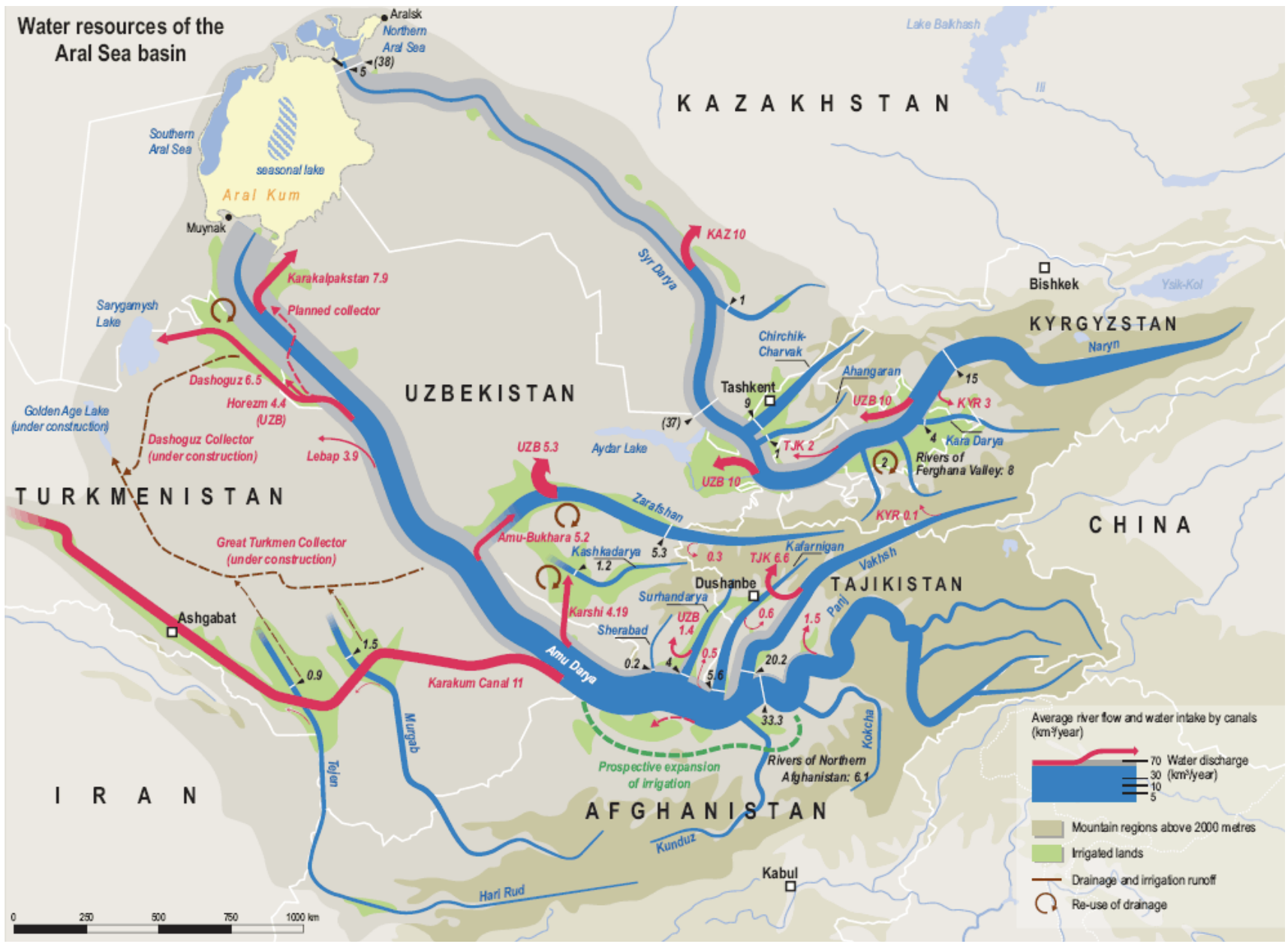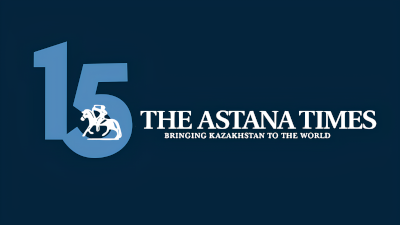ASTANA – The recent report by Atlantic Council’s Eurasia Center assessed the state of water security across the five Central Asian countries, encouraging increased regional cooperation, improved state-level water management and infrastructure investment during the report presentation on Feb. 7.

Photo credit: Shutterstock
The report, titled Water Insecurity in Central Asia: The Imperative for Regional and International Cooperation, investigates the extent of the water problem in the region and where the hopes for a change may lie. Over the years, poor management of Central Asian water resources has been compounded by climate change and population growth, putting further strain on dwindling natural water supplies.
The Central Asian region is facing increasing water-related challenges due to the unequal distribution of water resources across the region, said the report co-author Wesley Alexander Hill, assistant director and lead analyst of the Energy, Growth, and Security Program at the International Tax and Investment Center.

The report authors: Wesley Alexander Hill, Wilder Alejandro Sánchez and Ariel Cohen. Screenshot from the online report presentation.
“Central Asia has a unique geography. This geography means that every major river source of the downstream countries that we are talking about today – Kazakhstan, Uzbekistan, Turkmenistan, Tajikistan and the Kyrgyz Republic – their water sources originate from outside of these countries: Russia, China, Afghanistan. As a result, there is no environmental solution. There is no solution to these issues without a set of political solutions and a set of maxims going forward that can motivate both local actors and the international community,” said Hill.
He outlined certain efforts that are already underway to prevent a water crisis in the region.
“Central Asian countries have already approached China and Russia and, to a lesser extent, Afghanistan, and there are attempts at water sharing agreements. There is an attempt at cooperation. There is an attempt at working together to ensure that none of the issues that we’re going to be talking about today result in armed conflict or geopolitical brinkmanship,” said Hill.
“Some of these initiatives include humanitarian assistance in exchange for less water being drawn in Afghanistan. It includes investment assistance or reciprocity of travel agreements in the case with Central Asian countries and China. And it also includes profit motive driven business opportunities,” he added.
Hill highlighted that investing in Central Asia’s water infrastructure is not a “charity project” but a profitable opportunity, urging countries to take it into serious consideration.
“There’s plenty of money to be made for not just Chinese and Russian companies, but hopefully American and European companies, and doing things like realigning canals and many other initiatives,” said Hill.
Key recommendations
Wilder Alejandro Sánchez, the president of Second Floor Strategies consulting firm, said the report offers a holistic approach, with recommendations at the local, regional, and broader international levels.
At the local level, technological innovations in irrigation systems and improved water-management systems will help to soften the impact of the water crisis.
“For example, at the domestic level, we encourage local governments to continue implementing technologies like water measuring systems, drip irrigation, recycling of grey water and installing pump stations. Moreover, we encourage policymakers to think outside the box and consider incorporating new technologies and initiatives,” said Sánchez.
A key recommendation of the report is to modernize the Soviet-era canal infrastructure to prevent water loss through seepage. This involves paving and insulating the bottoms of canals to make them watertight. Additionally, covering the canals with solar panels could serve a dual purpose: generating renewable energy to power pumping and monitoring stations along the canal while also reducing water evaporation.
“Kazakhstan’s Irtysh-Karaganda canal, or the Arys-Turkistan canal, could be testing grounds for these solar panels,” said Sánchez.
The regional recommendations emphasize revising or restructuring regional water management frameworks to ensure fair water sharing in Central Asia.
“We think it’s critically important, there has to be a constant dialog among regional governments, international donors and supporters, but not just with each other, but also with the local population,” said Sánchez.
“In recent years, the government of Kazakhstan has engaged in the listening state initiatives started by President Tokayev. Other regional governments must carry out similar initiatives to discuss issues like good governance, budget issues and transparency and the same can be said about water security and environmental priorities,” he added.
Water crisis implications on transportation and agriculture
According to Ariel Cohen, a nonresident senior fellow at the Atlantic Council’s Eurasia Center and a member of the Council of Foreign Relations, maintaining adequate water levels in the Caspian Sea is crucial for the development of transport routes, including the sustainability of the Trans-Caspian International Transport Corridor.

Water resources of the Aral Sea basin. Source: CA Water Info, ”Water Flow and Water Use Data”
The Volga River, which flows from Russia to the Caspian Sea, faces significant water shortages by the time it reaches the sea. The construction of dams and the diversion of water upstream in Russia have reduced the water in the Caspian Sea.
“This is very damaging to the transportation development of the Caspian, because from Aktau to Baku, from Türkmenbaşy to Baku – all these barge and ship routes depend on the depth of ports, and if the ports are not deep enough, then the whole transportation corridor in the Caspian starts to get messed up,” said Cohen.
In Uzbekistan, one of the most water-intensive sectors is the cotton industry.
“In terms of development of the Amu Darya and Syr Darya, taking into account the disappearance of some of this water because of the Afghanistan canal, the question mark remains whether the cotton industry in Uzbekistan is going to be sustainable,” added Cohen.
He also agreed that modernizing the outdated water infrastructure is needed to prevent a major water crisis in the future. Some farmers have begun turning away from centuries-old irrigation techniques to more modern systems. According to Cohen, such solutions across the region could reduce water use by almost half.
“A lot of water is lost because modern irrigation technologies are not used. And you have the Soviet era canals, or even pre-Soviet traditional canals that are just dug in the ground without any kind of protection from evaporation or dissipation. Moving to pipe distribution of water and drip irrigation and sprinklers will save probably 50% of the water consumption and will move the region to a much more balanced water management,” said Cohen.
He emphasized that water security is crucial not only for regional stability but also for fostering economic growth and strengthening diplomatic relations between neighboring countries.
“Water is now the blood of this region, of this economy, and without resolving the water crisis, the region will not be able to develop properly. And I think it’s a chance for Kazakhstan to take a leadership role, and it’s doing that,” said Cohen.
President Kassym-Jomart Tokayev outlined key measures to tackle water security challenges at the One Water Summit in Riyadh in December, co-organized by France’s President Emmanuel Macron and the World Bank. Tokayev called for a “unified global response to ensure a sustainable future for all.”


